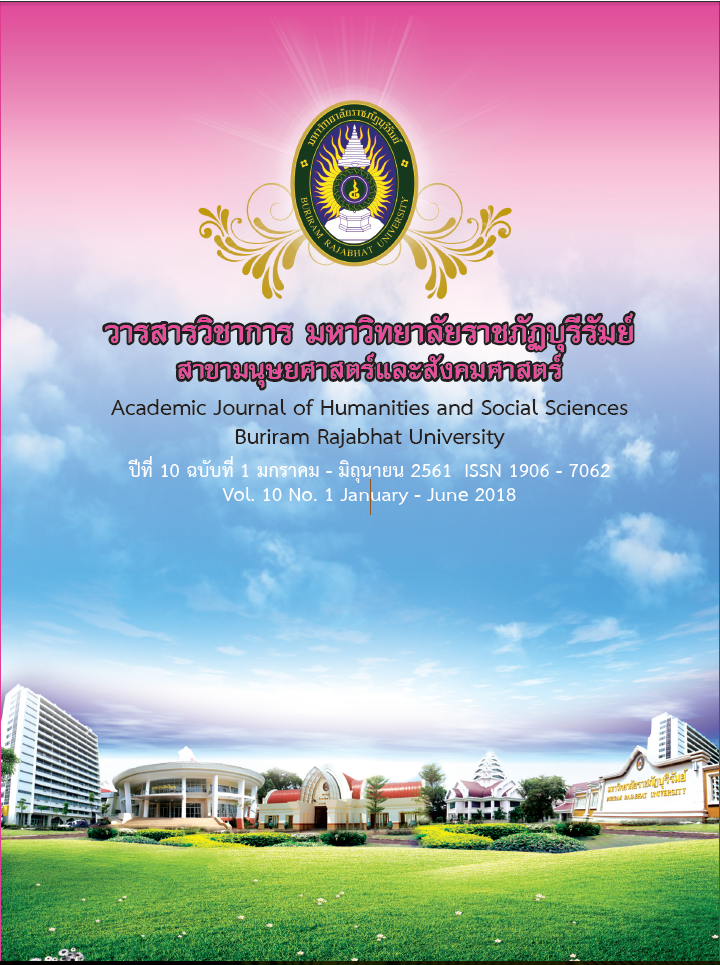การสำารวจความคิดเห็นและความต้องการของอาจารย์ประจำวิชา ต่อการใช้ภาษาอังกฤษในการสอนวิชาเพื่อปรับปรุงความสามารถ ทางภาษาอังกฤษของนักศึกษา
Main Article Content
บทคัดย่อ
วัตถุประสงค์ของงานวิจัยนี้คือการศึกษาความคิดเห็นและความต้องการของอาจารย์ประจำ
วิชาที่มีต่อการใช้ภาษาอังกฤษในการสอนเพื่อนำาไปปรับปรุงความสามารถทางด้านภาษาอังกฤษของ
นักศึกษา การวิจัยนี้ได้จัดทำาขึ้นในมหาวิทยาลัยราชภัฏร้อยเอ็ด กลุ่มตัวอย่าง คือ อาจารย์ที่มีการใช้
ภาษาอังกฤษในการสอนทั้งหมด 99 คน โดยใช้แบบสอบถามเป็นเครื่องมือในการเก็บข้อมูล ผลการ
วิจัยพบว่าอาจารย์มีความคิดเห็นในทางที่ดีต่อการใช้ภาษาอังกฤษในการสอน พบว่ามากกว่าร้อยละ
90 เห็นด้วยอย่างยิ่งว่าทักษะภาษาอังกฤษจะช่วยให้นักศึกษาพัฒนาความรู้ในสาขาวิชาที่ตนสอนได้
มากกว่าร้อยละ 85 เชื่อว่าการใช้ภาษาอังกฤษในการสอนจะเป็นประโยชน์อย่างมากต่อนักศึกษาที่ตน
สอน นอกจากนั้นยังพบว่าอาจารย์มีความเป็นกังวลและมีความเห็นว่าเป็นหน้าที่ความรับผิดชอบของ
อาจารย์ผู้สอนในแต่ละรายวิชาในการพัฒนาทักษะภาษาอังกฤษของนักศึกษา และจากผลสำารวจพบว่า
กลุ่มตัวอย่างมีความต้องการในการประสานงานกับอาจารย์ในสาขาวิชาภาษาอังกฤษ เพื่อพัฒนาการใช้
ภาษาอังกฤษในการสอนให้อย่างมีประสิทธิภาพ
Article Details
- ต้นฉบับที่ได้รับการตีพิมพ์ในวารสารวิชาการ มหาวิทยาลัยราชภัฏบุรีรัมย์ สาขามนุษยศาสตร์และสังคมศาสตร์ ถือเป็นกรรมสิทธิ์ของมหาวิทยาลัยราชภัฏบุรีรัมย์ ห้ามนำข้อความทั้งหมดหรือบางส่วนไปพิมพ์ซ้ำเว้นเสียแต่ว่าจะได้รับอนุญาตจากมหาวิทยาลัยฯ เป็นลายลักษณ์อักษร
- เนื้อหาต้นฉบับที่ปรากฏในวารสารเป็นความรับผิดชอบของผู้เขียน ทั้งนี้ไม่รวมความผิดพลาด อันเกิดจากเทคนิคการพิมพ์
References
language?.[Textfle].Retrievedfromhttps://www.weforum.org/agenda/2016/11/
which-countries-are-best-at-english-as-a-second-language-4d24c8c8-6cf6-4067-
a753-4c82b4bc865b/
Chang, B. M. (2011). The Roles of English Language Education in Asian Context. Pan-Pacifc
Association of Applied Linguistics. 15(1), 191-20
Evans, S. (2002). The medium of instruction in Hong Kong: Policy and practice in the
new English and Chinese streams. Research Papers in Education, 17(1), 97-120.
Online Proceedings of the International Conference: DRAL 3/19th ESEA 2017 264
Darasawang, P. (2207). English Language Teaching and Education in Thailand. English
in Southeast Asia: Varieties, Literacies and Literatures, Chapter: English Language
Teaching and Education in Thailand: A Decade of Change. Cambridge Scholars
Publishing, pp.187-204.
Dearden, J. (2014). English as a medium of instruction–a growing global phenomenon.
British Council. Online: http://www. britishcouncil. org/education/ihe/knowl
edgecentre/english-language-higher-education/report-english-medium-instruction
(accessed 2/2/2016).
Park, T. S., & Khemnguad, E. (n.d.). The use of English as a medium of instruction in
Thai Japanese Institution: Perceptions from the international business
management instructors, students and parents. Thai-Nichi Institute of
Technology.
Sindkhedkar, S. D. (2012). Objectives of Teaching and Learning English in India. Journal
of Arts, Science & Commerce. 3(1), 191-194
Su, Y. (2006). EFL teachers’ perceptions of English language policy at the elementary
level in Taiwan. Educational Studies, 32(3), 265-283
Suleman, Q., & Hussain, I. (2014). Effects of Classroom Physical Environment on the
Academic Achievement Scores of Secondary School Students in Kohat Division,
Pakistan. International Journal of Learning & Development, 4(1), 71-82
Tilahun, A. (2015). Subject Teachers’ Perceptions towards the use of English as
a Medium of Instruction to Improve Students’ Language Profciency.
International Journal on Studies in English Language and Literature (IJSELL),
3(9), 18-25.
Wesche, M. & Skehan, P. (2002). Communicative teaching, content-based instruction,
and task-based learning. In R. Kaplan (Ed.), Handbook of applied linguistics,
Oxford: Oxford University Press.
Wiriyachitra, A. (2002). English language teaching and learning in Thailand in this
decade. Thai TESOL Focus, 15(1), 4-9.

